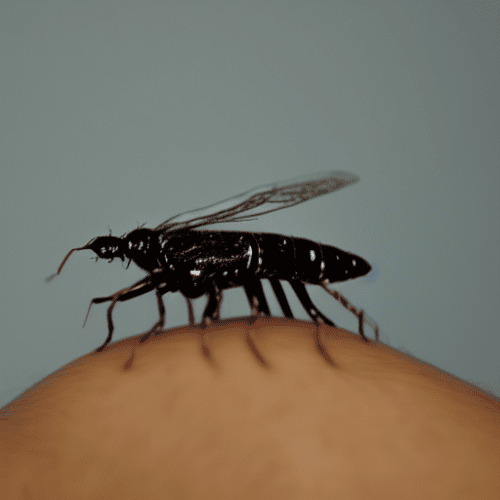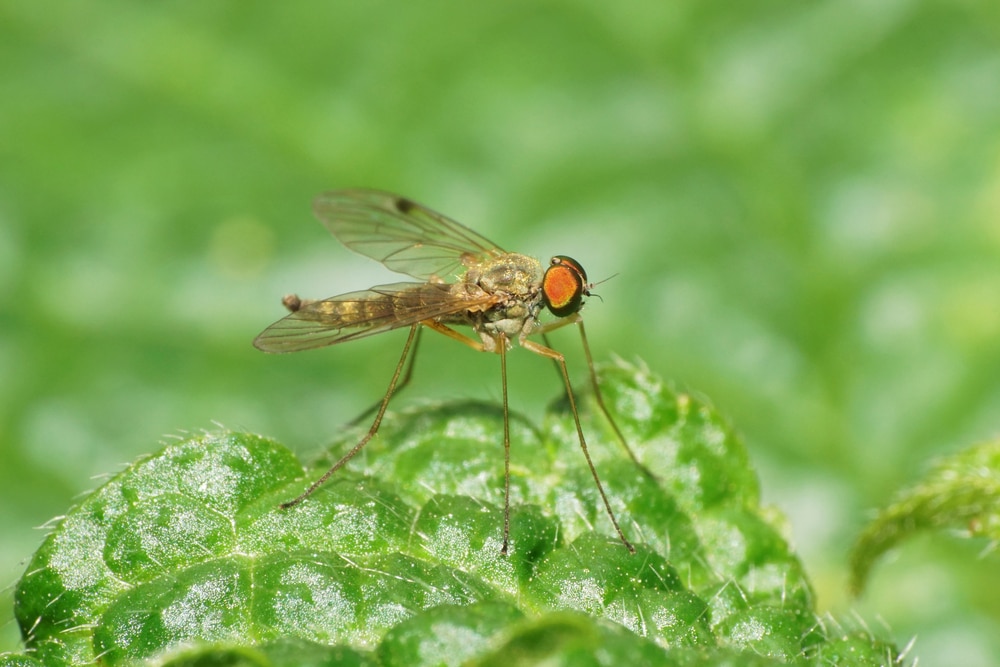Last Updated on
Want to know how to get rid of midges and enjoy an evening outdoors without any pesky insects buzzing around? Then you’ve come to the right place. Bug bites can cause discomfort in addition to being itchy, unpleasant, and irritated. Whether you want to discover the best midge repellent or know how to keep these flying insects away from you, we have everything you need to know in today’s article.
How to Get Rid Of Midges
The below tips will stop these pests from entering your home and biting you.
Practice Cleanliness
Keeping your body exceptionally clean is one of the first things you can do to act as a midge repellent. This is because biting midges thrive off the smell of sweat, the carbon dioxide we breathe out, as well as body heat. So remaining cool and clean is important to prevent midge bites in the first place.
Additionally, to prevent a midge infestation in your home, keep your kitchen space fresh and remove any overripe fruit, as these insects love high-sugar juices and foods.
Install Screens on Windows and Doors
One of the friendliest and most harmless ways of keeping midges out of your home is to install screens on your windows and doors. Make sure that these are tightly woven to prevent insects from reaching even the smallest holes and gaps.
Remove Stagnant Water
Midges will lay eggs in any water that’s lying around, which will lead to a midge infestation. As a result, we recommend emptying paddling pools, pet water bowls, and water dishes around the home when you’re not using them or refreshing them frequently to reduce the likelihood of having midge larvae grow.
Set Traps
A midge trap is easy to do and an effective way to have fewer midges and other pests in your home. Simply add apple cider vinegar to a bowl with a couple of drops of washing-up liquid. This solution will attract midges, which allows you to catch them. Make sure to empty the solution every couple of days and replace the bowl with a new bath of fresh solution.
Use Midge Repellents
Available from most stores, a midge repellent should be applied after sunscreen to any of the areas that are exposed. You might even want to consider a natural oil such as pine oil to detract midges in the first place.
Moreover, while midge repellents are perfect for completely deterring midges in the first place, they reduce the number of bites that you’ll encounter and are better than using nothing at all while you’re venturing outdoors. The best midge repellents include Smidge, citronella products, and picaridin.
Citronella is often included as a scent in any commercial insect repellent you buy. You can also find citronella candles are an easy and great smelling choice to set up around the space where you are sitting to repel these pests, including mosquitoes.
Consume Diet Supplements
Who’d have thought that dietary supplements could make you less susceptible to midge bites? But some supplements—including yeast, marmite, vitamin B1, and vitamin B12, can actually make your skin less enticing to biting midges.
Avoid Wearing Scented Fragrances
Wearing a lot of perfume or using heavenly-scented moisturiser and creams attract midges. If you’re going camping or hiking, we recommend opting for unscented beauty products or skipping them together. And if you have to choose a scented fragrance, consider using a product that doesn’t have a sweet or fruity aroma.
Try to Limit Exposed Skin
One of the best ways to prevent midge bites is to avoid having your skin exposed in the first place. Additionally, don’t forget to cover your feet by wearing closed shoes that protect both feet from midge bites.
Wear Light-Coloured Clothing
Not exposing your skin, another important factor is the colour of your clothing. A dark colour attracts midges, so we recommend wearing lighter-coloured shades, although you should avoid light blue.
Avoid Sheltered Areas
Midges tend to prefer secluded, shaded areas, especially if there’s a stream nearby. So if you’re tenting outside, avoid such areas and choose a spot that’s more exposed to prevent sleeping in an area to which midges are more attracted. You often won’t find midges in a breezy environment as their slow-moving wings aren’t able to keep up with these conditions.
Furthermore, you’ll want to make your tent midge-proof by using mosquito nets netting on the exterior of your tent. It’s important that you purchase pre-brought mesh netting, as this is designed to prevent midges from squeezing through tiny gaps. You can also use a repellent spray to spritz on your tent as an additional midge deterrent.
Spend Time in Higher Altitudes
Midges don’t like being at high altitudes due to the stronger winds and lower temperatures, so we recommend that the higher up you go, the safer you’ll be from midge bites. From around 750 metres above sea level, you will encounter fewer midge populations and, therefore, be safer from bites.
When and Where Can You Find Midges?
The traditional month for midges to come out in the UK is May until late September, when the weather then gets more wet and humid. Although, if spring is warmer one year, then you can expect to see more midges earlier and making an appearance in your garden and home.
Additionally, location has a big part to play in midges’ presence. Midges tend to fly in areas where there’s a lot of wet ground, through wooded areas and in damp environments. They also tend to lay eggs in rivers, lakes and ponds. Moreover, midges are more likely to be present in the early morning and dusk, especially if there’s some breeze.
Getting Rid of Midges in Your Garden
If you have large midge populations in your garden, you’ll want to minimise the number to prevent any irritations and bites. While you can’t completely eradicate a large midge population, you can make your garden less enticing for midges to populate it in the first place.
You can do this by removing as many stagnant water sources as possible. So, if you have a pond in your garden, try to keep the water continually moving by installing a pump. You may even need to go a step further for midge control by raking the lawn clear of dead grass, which can become breeding grown for larvae.
What Do Midges Look Like?
Midges are a grey colour, small in size and don’t usually grow much bigger than 1/8 inch. A midge – whether that’s a Scottish midge or a highland midge – features two wings, six legs and segmented antennae. They look similar to mosquitoes and have small bodies with skinny legs. Additionally, it’s good to know that there are two types of midges: the biting and non-biting types. Although non-biting midges don’t pose any harm, it’s hard to distinguish between the two when they’re buzzing around or sitting on you.
Why Do Midges Bite?
So why does a midge bite in the first place? Female midges draw blood from humans to produce protein to protect their eggs. These midges are slow-moving. They will acquire protein from any source, including animals and, of course, humans. For this reason, you want to reduce any areas in which midges breed. Take a look around your house to see if there are any breeding grounds to stop the midge life cycle from the beginning.
How to Identify a Midge Bite
You can recognise midge bites based on a painful sensation in your skin while sometimes encountering a sharp or stinging feeling. These bites can create small lumps on the body, which lead to itchiness. All the while, you might find that your skin becomes sensitive in these parts, making you more prone to reactions and even developing blisters around that area.
Treating Itchy Bites
Bites can be itchy and irritating, but do not worry, as there are several home remedies and commercially available products that will help reduce the itchiness.
Use an Icepack
Icepacks are great for treating mild injuries and reducing the swelling or pain caused by a midge bite. The process is simple; apply a cold compress, gel pad, icepack or a packet of frozen vegetables wrapped in a towel to the affected area. After several minutes, you should feel a reduction in itchiness as well as reduced redness and swelling without the need for medication.
Raise the Area
After being bitten by a midge, you’ll want to raise the affected area to reduce any swelling. For example, if you’ve been bitten on your arm, keep your arm raised for a few minutes to reduce the itchiness.
Resist the Urge to Scratch

It can be tempting to scratch the midge bite, but it’s important that you avoid further irritating and scratching your skin, as this could lead to scarring. When midges bite, they pierce a hole in your skin and inject saliva into the wound, preventing your blood from clotting. The saliva creates this itching sensation as most of us have a mild to a strong reaction.
Anti-Itch Creams
To further relieve itching and redness, you can apply some hydrocortisone cream directly onto the bite. Hydrocortisone cream will reduce irritation, redness and any soreness, as well as relieve these symptoms quickly. Best of all, you won’t need a prescription to purchase this type of cream.
If you’ve never used these types of creams, we recommend doing a patch test first; in other words, trying it out on a small area to ensure that you don’t have an allergic reaction to it.
Why Do Some People Get Bitten More Often Than Others?
Some people get bitten more often than others, and this isn’t just down to chance or luck. Simply put, some people’s skin attracts biting midges and other insects more due to the oils and smell of their skin. The way our skin smells can be affected by many things, including what food we eat and our general well-being. As a result, two people can be sat right next to one another, and one person may get bitten more than the other. This can be due to their natural smell composition or if one of them is wearing a strongly perfumed product. Generally speaking, the body’s natural excretion is usually the main reason for this.
Do Midges Pass On Diseases and Infections Through Their Bites?
Bites are annoying, but fortunately, they don’t transmit diseases to humans as mosquitoes do. They can carry some type of animal disease that might be painful for animals, and biting midges have been known to carry some viruses, but these viruses don’t negatively affect humans.
The Best Preventative Measures
Prevention is better than cure, which is why you should consider our above tips on how to deter midges. Use a natural product on your skin hair without any strong or sweet fragrances. For your home, we recommend purchasing window screens to keep them at bay, and for your garden, we suggest that you remove any stagnant water bodies.
Do you have any other tips and tricks? We’d love to hear what your go-to midge killer is and how you keep these flies out of your home. Let us know your recommendations and tips in the comments.
Amy is a U.K.-based writer and editor with a penchant for helping consumers find the best home products for their needs, as well as providing easily digestible guides for living better at home. Her dedication to her work means she can usually be found elbow-deep in research or hunting down samples of the latest and greatest on behalf of her readers.
An avid DIYer herself, Amy’s passion lies in teaching others how they too can achieve their dream homes by tackling some of those pesky projects themselves! Whether it’s building furniture from scratch or turning an old dresser into a coffee table, Amy is always happy to share what she knows about making your house feel like home without spending a fortune.



